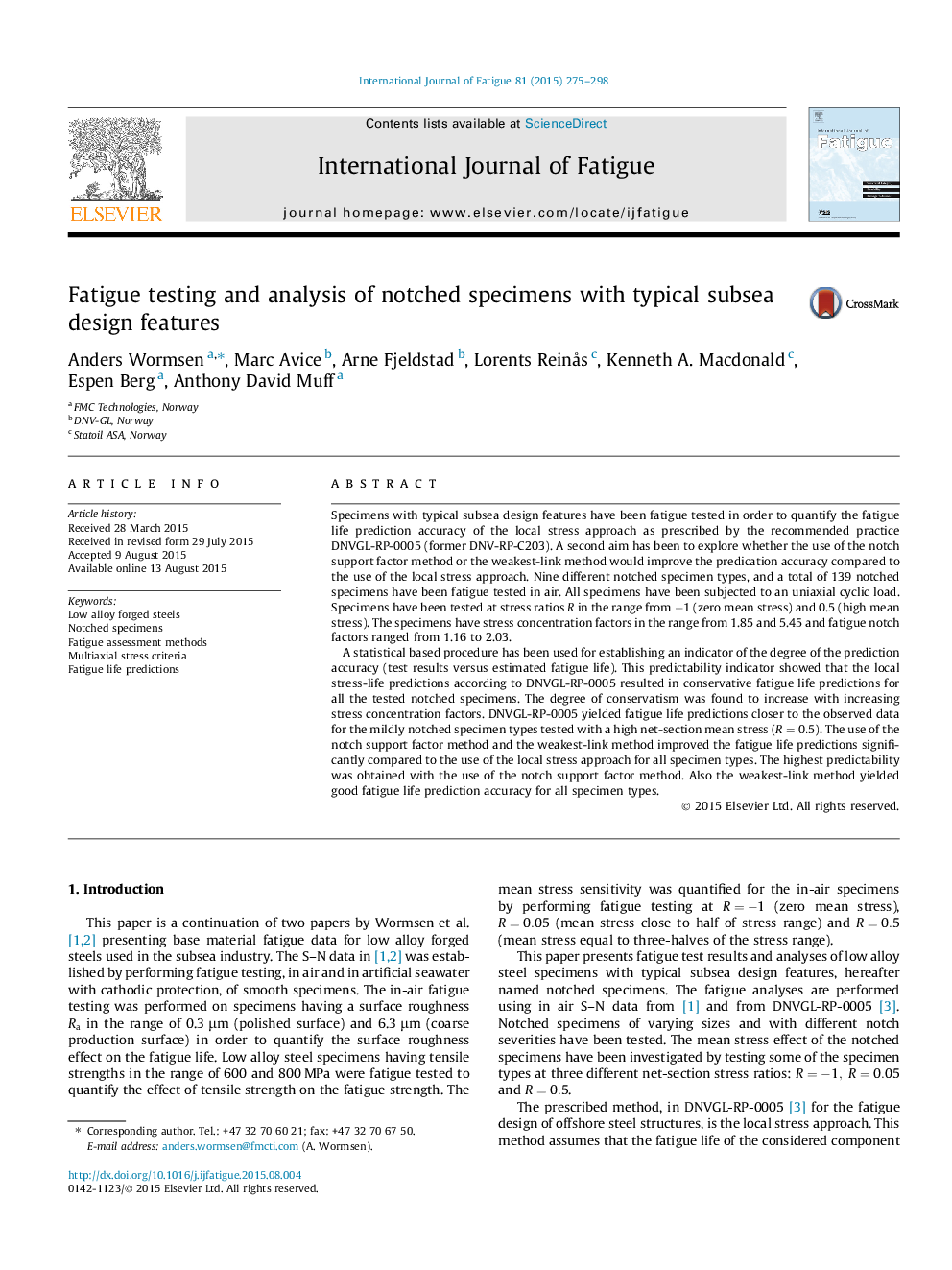| Article ID | Journal | Published Year | Pages | File Type |
|---|---|---|---|---|
| 774985 | International Journal of Fatigue | 2015 | 24 Pages |
•Fatigue test results for specimens with typical subsea design features are presented.•Fatigue life predictions from three different methods have been compared with the test results.•Three different multiaxial fatigue criteria were considered in combination with the three methods.•The local stress approach yielded conservative fatigue life predictions for all the tested notched specimens.•The notch support factor method and the weakest-link method improved the fatigue life predictions significantly.
Specimens with typical subsea design features have been fatigue tested in order to quantify the fatigue life prediction accuracy of the local stress approach as prescribed by the recommended practice DNVGL-RP-0005 (former DNV-RP-C203). A second aim has been to explore whether the use of the notch support factor method or the weakest-link method would improve the predication accuracy compared to the use of the local stress approach. Nine different notched specimen types, and a total of 139 notched specimens have been fatigue tested in air. All specimens have been subjected to an uniaxial cyclic load. Specimens have been tested at stress ratios R in the range from −1 (zero mean stress) and 0.5 (high mean stress). The specimens have stress concentration factors in the range from 1.85 and 5.45 and fatigue notch factors ranged from 1.16 to 2.03.A statistical based procedure has been used for establishing an indicator of the degree of the prediction accuracy (test results versus estimated fatigue life). This predictability indicator showed that the local stress-life predictions according to DNVGL-RP-0005 resulted in conservative fatigue life predictions for all the tested notched specimens. The degree of conservatism was found to increase with increasing stress concentration factors. DNVGL-RP-0005 yielded fatigue life predictions closer to the observed data for the mildly notched specimen types tested with a high net-section mean stress (R=0.5R=0.5). The use of the notch support factor method and the weakest-link method improved the fatigue life predictions significantly compared to the use of the local stress approach for all specimen types. The highest predictability was obtained with the use of the notch support factor method. Also the weakest-link method yielded good fatigue life prediction accuracy for all specimen types.
